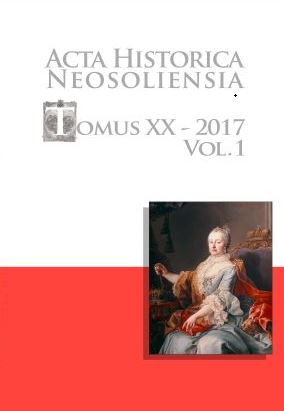The Peasantry of Gemer County at the Time of the Socage Regulations
The Peasantry of Gemer County at the Time of the Socage Regulations
Author(s): Zita HorváthSubject(s): History
Published by: Filozofická fakulta Univerzity Mateja Bela
Keywords: socage reform; Gemer (Gömör) county; peasantry; status of serfs;
Summary/Abstract: On the basis of peasant statements taken during the socage reform and socage tables, this paper investigates what the conditions of the peasantry in Gemer (Gömör) county were directly before the socage regulations. To sum up the status of serfs, it can be said that there had been a kind of equalisation in duties by the time of the socage reform. There were no significant differences in either the manner of taxpaying or the amount of taxes. It cannot be stated that there were any conspicuous differences between the burdens of perpetual serfs and serfs who had the freedom of movement to the disadvantage of perpetual serfs. Prior to the unification of socage, peasants made no statement about the presence of urbarium in any of the 128 settlements. There were some cases of contracting but most common was the customary treatment (usus). The source contained no complaints about the increase of duties but the statements revealed that there had been an increase in the duties of serfs after the introduction of unified socage but it is also true that they had become more unified and transparent. I have underlined in several studies that although the survey with nine questions is extremely valuable as a source and is especially suitable for comparative studies as characteristics valid in one time segment can be deduced from it, in itself, it is not sufficient to reveal every aspect of peasant life. For this, it would be necessary to rely on a great many other sources, too.
Journal: Acta historica Neosoliensia
- Issue Year: 1/2017
- Issue No: 20
- Page Range: 35-47
- Page Count: 13
- Language: English

